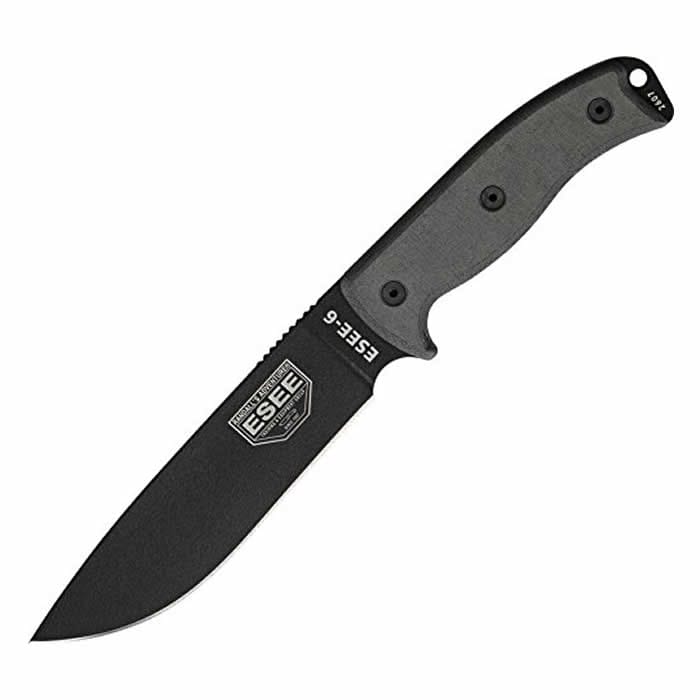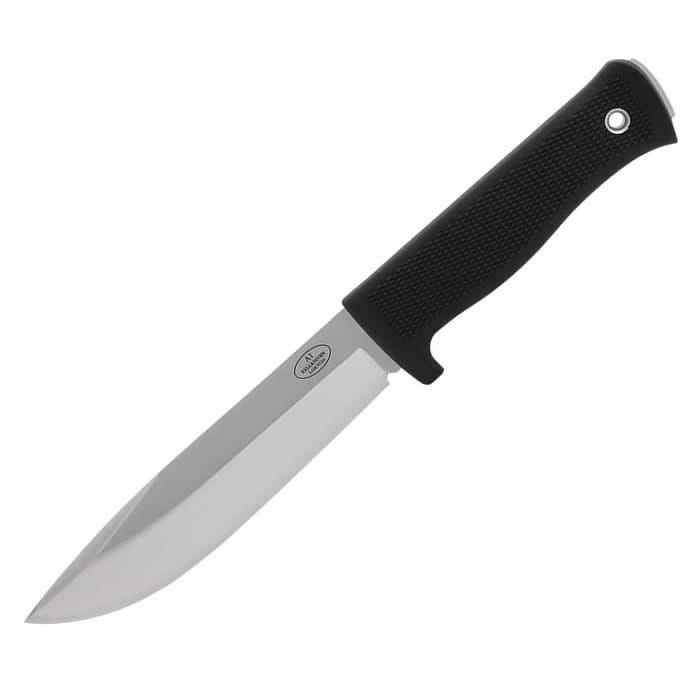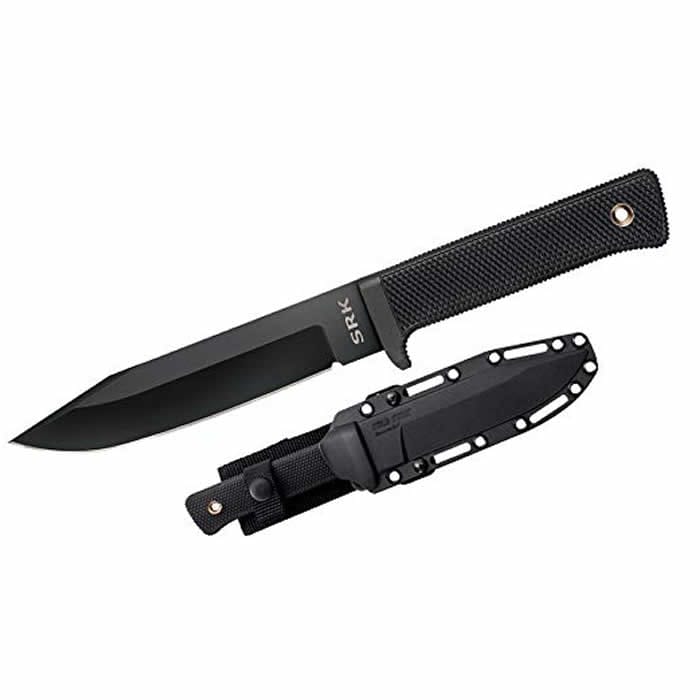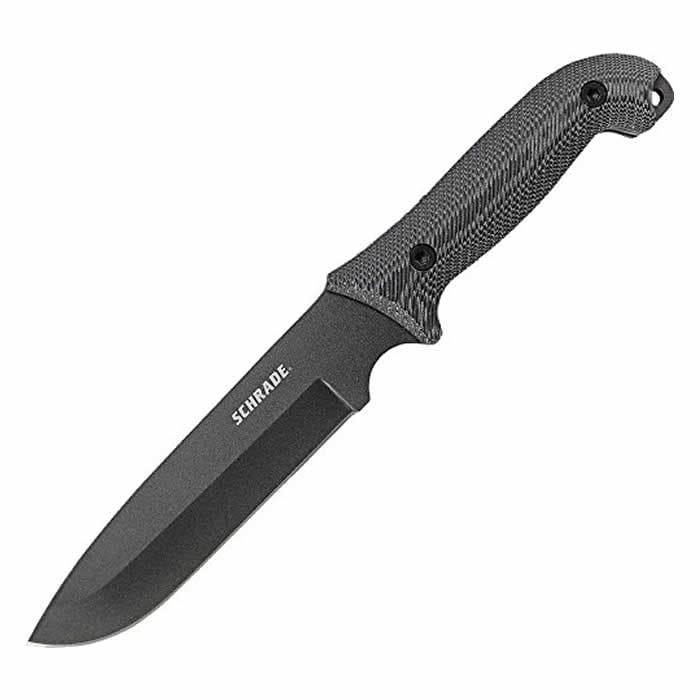![What is Batoning? [with Video] What is Batoning? [with Video]](https://survival-kompass.de/img/artikel/batoning-holz-spalten.jpg)
What is Batoning? [with Video]
👉 The key facts from this guide
- Batoning is a technique for splitting wood with a baton and a knife.
- It is suitable for chopping firewood, making kindling, and preparing boards for shelter.
- Batoning is easier than splitting with an axe and requires less effort.
- However, there are disadvantages, such as difficulty with wet wood or the risk of damaging the blade.
- An appropriate knife for Batoning should be durable, strong, and tough, preferably a full tang knife.
- The choice of baton and technique are also important to avoid damaging the blade.
If you're into survival and bushcraft, you've definitely come across the term Batoning before.
But you have absolutely no idea what it means, what it's supposed to be, and what it's good for? In this case, you've come to the right place.
In this article, I'll go into more detail about this technique and explain why you should choose a knife over an axe.
Additionally, I'll give you tips on how to do everything right when Batoning.
On the other hand, I'll also point out common mistakes that you truly must avoid. I'll also explain the ideal knife length for Batoning.
What is Batoning?
Batoning describes a special technique for splitting wood with a baton. You lay a robust and strong knife on the piece of wood to be split. Then you hit the back of the knife with a piece of wood, a baton, or a mallet. Once the knife is submerged in the wood, you hit the front part of your knife until the wood is split.
Why should I use Batoning?
Among nature lovers, bushcrafters and survivalists, the topic of Batoning is controversially discussed.
When batoning, the camps are split by a very distinct line: one group judges the quality of a survival, bushcraft or outdoor knife based on the blade's suitability for batoning. Others can only shake their heads and go back to using an axe.
But why should you use the batoning technique at all? Among other things, this technique is excellent for splitting firewood, removing wet layers from firewood, and preparing tinder.
In addition to splitting wood, batoning can also be used to prepare appropriate wood boards for your shelter or other shelter.
Why not just use an axe?
Or: The Benefits of Batoning
You're probably wondering why you shouldn't just split your wood with an axe. In fact, there are a few advantages to the batoning technique.
First, splitting wood, for any purpose, is much easier with a knife than with an axe. Don't believe it? Go outside and try it for yourself!
You need much less force for batoning, and with this technique, you can split smaller firewood much faster. In addition to the time savings, using a knife also results in a much cleaner cut than if you were to hack the wood with an axe.
It is easy to understand why batoning results in a cleaner cut. When chopping, the wedge-shaped head of a splitting axe penetrates the wood, causing the wood to split but also tear apart due to the force applied.
When utilizing the technique of batoning, the sharp edge of the knife is used to cut through the wood, resulting in a very clean cut.
![Was ist Batoning? Survival und Bushcraft Wissen. [Video] Comparison of an axe and a knife](https://survival-kompass.de/img/artikel/batoning-axt-messer-vergleich.jpg)
In addition, no experience is necessary for batoning. While chopping with an axe requires practice and significant physical strength, batoning requires very little practice.
The disadvantages of batoning
As with anything else, batoning also has its disadvantages. For example, splitting especially wet wood can make the process much more challenging.
Additionally, caution should be exercised during initial attempts. If an unsuitable batoning tool is used, the knife may become damaged or, worst-case scenario, the blade may break.
To avoid this, ensure that proper batoning technique is implemented. More guidance is provided below.
Why the blade may break during batoning
A common cause is angling the knife while batoning. This results in the blade breaking when the baton is hit directly against the angled knife.
On the other hand, it is possible to break the blade even if it has been placed on the wood straight, but if the baton is angled when it comes into contact with the knife.
The choice of batoning tool can also be responsible for blade breakage. Using a stone or iron pipe, for example, can cause damage and, in the worst-case scenario, cause the blade to break.
You must always use a piece of wood as a baton.
Another reason may be a blade that is too thin or the wrong type of knife.
Here you can see a kitchen knife that has been used for batoning 20 to 30 times. It is broken.
![Was ist Batoning? Survival und Bushcraft Wissen. [Video] Broken knife from batoning](https://survival-kompass.de/img/artikel/batoning-klinge-gebrochen.jpg)
The ideal knife for batoning
Firstly, it's important to find a suitable knife. In general, you can perform batoning with any knife. However, make sure that the blade and steel are durable, strong, and tough enough to withstand several strong blows on the back of the blade. The knife must also not deform during batoning.
The best option is a full-tang knife, also known as a full tang. With a full tang, the blade extends through the entire handle, making these knives more durable and ideal for batoning. There are also knives with 1/2 tang, 1/4 tang, and rat tail tang, but these are not as stable. So, if you have the choice, opt for a full-tang knife.
![Was ist Batoning? Survival und Bushcraft Wissen. [Video] Different types of knives](https://survival-kompass.de/img/artikel/full-tang-dreiviertel-Tang-half-tang-rat-tail-tang.jpg)
Furthermore, make sure that the blade of your chosen knife is a few centimeters longer than the diameter of the piece of wood.
If you intend to use the batoning technique more often, you should get a long knife. With a longer knife, you can even get through small pieces of wood. But if you have a very short knife, your reach will be limited.
The thickness of the blade is not crucial. Batoning mostly depends on the length. However, make sure that your knife is at least 2–3 millimeters thick.
If you have the choice, decide on a knife with a rubberized handle. This will absorb the blows and prevent possible injuries.
Recommended reading: Find the best bushcraft knife with my ultimate guide.
The right technique
The most important thing in batoning is that the knife penetrates the wood horizontally. Therefore, make sure to position the blade as straight as possible from the beginning.
Position the blade in the center of the piece of wood to be split. Then, strike the back of the blade with a baton, making sure the knife stays straight.
Switch the striking point as soon as the entire width of the blade has entered the wood. Then, strike the part of the blade that is protruding from the wood. Be careful not to hit the tip directly, as it is weaker than the rest of the blade.
If the knife becomes wedged, lightly strike the handle from above and below. This should release it easily.
However, be careful with blows to the handle. Never hit with the same force as you would on the back of the blade.
Mistakes to avoid when batoning
There are six common mistakes when batoning, but you surely won't make them.
- Alignment: Align the piece of wood on a firm, non-spongy surface. On soft ground or grass, the wood will just drive into the ground.
- Knife selection: Use a sufficiently long full tang knife for batoning. Pocket knives, folding knives, kitchen knives, and serrated knives are a poor choice. They either get stuck or break.
- Wood: Use softwood for batoning if possible. This includes willow and linden. Using hardwood will take much more time for batoning.
- Practice: Start with small pieces of wood and work your way up. If you start with a large piece without experience, you will encounter problems. Your blade will break, or the knife will get stuck.
- Baton: Use a large piece of wood for this. It may be faster with a stone or metal pipe, but you will eventually damage your knife.
- Grain, knots, and eyes: Make sure to split the piece of wood with the grain. If you set it across the grain, your knife will be under a stronger load. Furthermore, avoid hitting your knife through knots or eyes if possible. These are very stubborn. Your knife will also be under too much stress here.
Recommendations for knives
As described above, your knife should be long, sturdy, robust, and thick enough. Additionally, a full-tang knife is optimal for batoning.

The ESEE RC6P outdoor knife has a blade length of 14.6 cm and is almost 30 cm long overall. Strong steel, solid grip. If you're looking for a knife that can take a lot, then the ESEE RC6P is perfect for you. This robustness and quality comes at a price, but it's justified. A knife made for decades.

The Fallkniven Sport A1K A1 Survival Knife has a blade length of 16 cm and a Zytel sheath. Blade thickness: 6 mm, total length: 28 cm. The grip is grippy and splitting wood is child's play for the knife. A very high-quality knife without frills. Not cheap in price, but popular among connoisseurs of the quality brand Fallkniven.
Was batoning a new topic for you? Do you already practice this technique regularly, or do you not like it at all?
Do you split your wood with a knife, or do you prefer an axe? Which knife or which axe do you prefer for this?
Tell us about your experiences and write your feedback in the comments.


Author of the guide
Martin Gebhardt
Hey, I'm Martin. On my blog, you will learn the basics and numerous details about living in the wild. I think survival, bushcraft and the good life in nature are the keys to happiness. Find me here on Instagram or on YouTube. You can find more about my mission on the About Me page.
Was this guide helpful?
28 people found this guide helpful.
5.00 out of 5 points (28 Ratings)
Comments (0)
This post may contain affiliate links. So if you click on the links and make a purchase, I will receive a small commission at no additional cost to you. Click here, to learn more about it.




